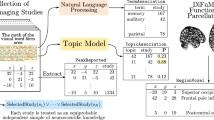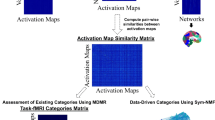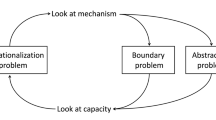Abstract
We present the basic structure of the Cognitive Paradigm Ontology (CogPO) for human behavioral experiments. While the experimental psychology and cognitive neuroscience literature may refer to certain behavioral tasks by name (e.g., the Stroop paradigm or the Sternberg paradigm) or by function (a working memory task, a visual attention task), these paradigms can vary tremendously in the stimuli that are presented to the subject, the response expected from the subject, and the instructions given to the subject. Drawing from the taxonomy developed and used by the BrainMap project (www.brainmap.org) for almost two decades to describe key components of published functional imaging results, we have developed an ontology capable of representing certain characteristics of the cognitive paradigms used in the fMRI and PET literature. The Cognitive Paradigm Ontology is being developed to be compliant with the Basic Formal Ontology (BFO), and to harmonize where possible with larger ontologies such as RadLex, NeuroLex, or the Ontology of Biomedical Investigations (OBI). The key components of CogPO include the representation of experimental conditions focused on the stimuli presented, the instructions given, and the responses requested. The use of alternate and even competitive terminologies can often impede scientific discoveries. Categorization of paradigms according to stimulus, response, and instruction has been shown to allow advanced data retrieval techniques by searching for similarities and contrasts across multiple paradigm levels. The goal of CogPO is to develop, evaluate, and distribute a domain ontology of cognitive paradigms for application and use in the functional neuroimaging community.

Similar content being viewed by others
References
Altmann, C. F., et al. (2007). Processing of location and pattern changes of natural sounds in the human auditory cortex. NeuroImage, 35(3), 1192–1200.
Amari, S., et al. (2002). Neuroinformatics: the integration of shared databases and tools towards integrative neuroscience. Journal of Integrative Neuroscience, 1(2), 117–128.
Arp, R., et al. (2008). Function, role, and disposition in basic formal ontology. Nature Precedings.
Bilder, R. M., et al. (2009). Cognitive ontologies for neuropsychiatric phenomics research. Cognitive Neuropsychiatry, 14(4–5), 419–450.
Brinkman, R. R., et al. (2010). Modeling biomedical experimental processes with OBI. Journal of Biomedical Semantics, 1(Suppl 1), S7.
Brown, G. G., et al. (2009). Brain-performance correlates of working memory retrieval in schizophrenia: a cognitive modeling approach. Schizophenia Bulletin, 35(1), 32–46.
Bug, W. J., et al. (2008). The Nifstd and Birnlex vocabularies: building comprehensive ontologies for neuroscience. Neuroinformatics, 6(3), 175–194.
Burns, G., et al. (2009). Biomedical knowledge engineering tools based on experimental design: A case study based on neuroanatomical tract-tracing experiments. KCAP 2009. Long Beach, CA.
Cook, D. L., et al. (2004). The foundational model of anatomy: a template for the symbolic representation of multi-scale physiological functions. Conference Proceedings - IEEE Engineering in Medicine and Biology Society, 7, 5415–5418.
Derrfuss, J., et al. (2009). Lost in localization: the need for a universal coordinate database. NeuroImage, 48(1), 1–7.
DeYoe, E. A., et al. (1996). Mapping striate and extrastriate visual areas in human cerebral cortex. Proceedings of the National Academy of Sciences of the United States of America, 93(6), 2382–2386.
Fennema-Notestine, C. (2009). Enabling public data sharing: encouraging scientific discovery and education. Methods in Molecular Biology, 569, 25–32.
Ford, J. M., et al. (2009). Tuning in to the voices: a multi-site Fmri study of auditory hallucinations. Schizophenia Bulletin, 35(1), 58–66.
Frishkoff, G. A., et al. (2007). A framework to support automated Erp pattern classification and labeling. Computational Intelligence and Neuroscience 2007, Article ID 14567, p 13.
Frishkoff, G. A., et al. (2009). Development of neural electromagnetic ontologies (Nemo): Representation and integration of event-related brain potentials. Proceedings of the International Conference on Biomedical Ontologies (ICBO09). Buffalo, NY.
Fox, P. T., et al. (2002). Opinion: mapping context and content: the BrainMap model. Nature Reviews Neuroscience 3(4), 319–21.
Gadde, S., et al. (2011). Xcede: an extensible schema for biomedical data. Neuroinformatics.
Gardner, D., et al. (2008). The neuroscience information framework: a data and knowledge environment for neuroscience. Neuroinformatics, 6(3), 149–160.
Golbreich, C., et al. (2006). The foundational model of anatomy in owl: experience and perspectives. Web Semantic, 4(3), 181–195.
Hamilton, A. F. (2009). Lost in localization: a minimal middle way. NeuroImage, 48(1), 8–10.
INCF (2010). Report of Oversight Committee on Metadata Standards, 12–13 January.
Keator, D. B., et al. (2006). A general Xml schema and Spm toolbox for storage of neuro-imaging results and anatomical labels. Neuroinformatics, 4(2), 199–212.
Keator, D. B., et al. (2008). A national human neuroimaging collaboratory enabled by the biomedical informatics research network (Birn). IEEE Transactions on Information Technology in Biomedicine, 12(2), 162–172.
Kiehl, K. A., et al. (2005). Abnormal hemodynamics in schizophrenia during an auditory oddball task. Biological Psychiatry, 57(9), 1029–1040.
Kim, D., et al. (2009a). Auditory oddball deficits in schizophrenia: an independent component analysis of the Fmri multisite function Birn study. Schizophrenia Bulletin, 35(1), 67–81.
Kim, D. I., et al. (2009b). Dysregulation of working memory and default-mode networks in schizophrenia using independent component analysis, an Fbirn and Mcic study. Human Brain Mapping, 30(11), 3795–3811.
Laird, A. R., et al. (2005). BrainMap: the social evolution of a human brain mapping database. Neuroinformatics, 3(1), 65–78.
Laird, A. R., et al. (2009). Lost in localization? The focus is meta-analysis. NeuroImage, 48(1), 18–20.
Langlotz, C. P. (2006). Radlex: a new method for indexing online educational materials. Radiographics, 26(6), 1595–1597.
Larson, S. D., et al. (2009). Ontologies for neuroscience: what are they and what are they good for? Frontiers in Neuroscience, 3(1), 60–67.
Mabee, P. M., et al. (2007). Phenotype ontologies: the bridge between genomics and evolution. Trends in Ecology & Evolution, 22(7), 345–350.
Marcus, D. S., et al. (2007). The extensible neuroimaging archive toolkit: an informatics platform for managing, exploring, and sharing neuroimaging data. Neuroinformatics, 5(1), 11–34.
McKenna, F. P., et al. (2004). Reversing the emotional stroop effect reveals that it is not what it seems: the role of fast and slow components. Journal of Experimental Psychology. Learning, Memory, and Cognition, 30(2), 382–392.
Mungall, C. J., et al. (2010). Integrating phenotype ontologies across multiple species. Genome Biology, 11(1), R2.
Nielsen, F. A. (2009). Lost in localization: a solution with neuroinformatics 2.0? NeuroImage, 48(1), 11–13.
Poldrack, R. A. (2006). Can cognitive processes be inferred from neuroimaging data? Trends in Cognitive Sciences, 10(2), 59–63.
Poldrack, R. A., et al. (Manuscript under review). The cognitive atlas: towards a knowledge foundation for cognitive neuroscience.
Potkin, S. G., et al. (2009). Working memory and Dlpfc inefficiency in schizophrenia: The Fbirn study. Schizophenia Bulletin, 35(1), 19–31.
Rosse, C., et al. (2003). A reference ontology for biomedical informatics: the foundational model of anatomy. Journal of Biomedical Informatics, 36(6), 478–500.
Smith, B., et al. (2005). Relations in biomedical ontologies. Genome Biology, 6(5), R46.
Smith, B., et al. (2007). The Obo foundry: coordinated evolution of ontologies to support biomedical data integration. Nature Biotechnology, 25(11), 1251–1255.
Spiers, H. J., et al. (2007). Decoding human brain activity during real-world experiences. Trends in Cognitive Sciences, 11(8), 356–365.
Sternberg, S. (1966). High-speed scanning in human memory. Science, 153, 652–654.
Stroop, J. R. (1935). Studies of interference in serial verbal reactions. Journal of Experimental Psychology, 18, 643–662.
Toga, A. W. (2002). Neuroimage databases: the Good, the Bad and the Ugly. Nature Reviews Neuroscience, 3(4), 302–309.
Van Essen, D. C. (2005). A population-average, landmark- and surface-based (Pals) atlas of human cerebral cortex. NeuroImage, 28(3), 635–662.
Van Essen, D. C. (2009). Lost in localization–but found with Foci?! NeuroImage, 48(1), 14–17.
Van Horn, J., et al. (2001). The functional magnetic resonance imaging data center (Fmridc): the challenges and rewards of large-scale databasing of neuroimaging studies. Philosophical transactions of the Royal Society of London, Series B Biological Sciences, 356, 1323–1339.
W3C-OWL-Working-Group. (2009). “Owl 2 Web Ontology Language: W3c Recommendation 27 October 2009.” Retrieved December 9, 2009, from http://www.w3.org/TR/2009/REC-owl2-overview-20091027/.
Washington, N. L., et al. (2009). Linking human diseases to animal models using ontology-based phenotype annotation. PLoS Biology, 7(11), e1000247.
Xiang, Z., et al. Ontofox: web-based support for ontology reuse. BMC Res Notes 3, 175.
Acknowledgements
This work was supported by NIH R01-MH084812 to Drs. Laird and Turner (co-PIs). We would like to acknowledge Fahim Imam from the Neuroscience Information Framework (http://www.neuinfo.org) for his work in integrating CogPO version 1 into NeuroLex, as well.
Author information
Authors and Affiliations
Corresponding author
Rights and permissions
About this article
Cite this article
Turner, J.A., Laird, A.R. The Cognitive Paradigm Ontology: Design and Application. Neuroinform 10, 57–66 (2012). https://doi.org/10.1007/s12021-011-9126-x
Published:
Issue Date:
DOI: https://doi.org/10.1007/s12021-011-9126-x




